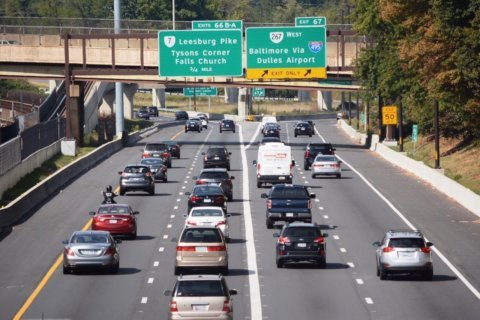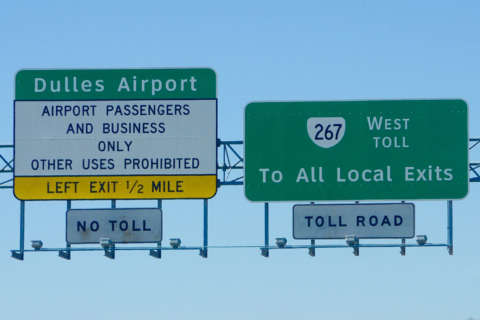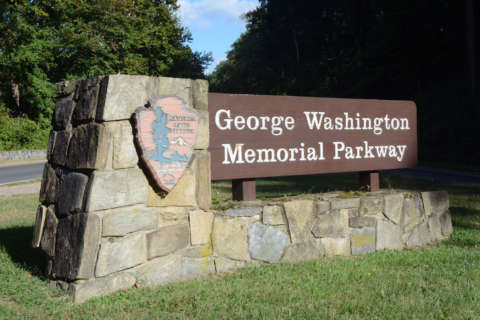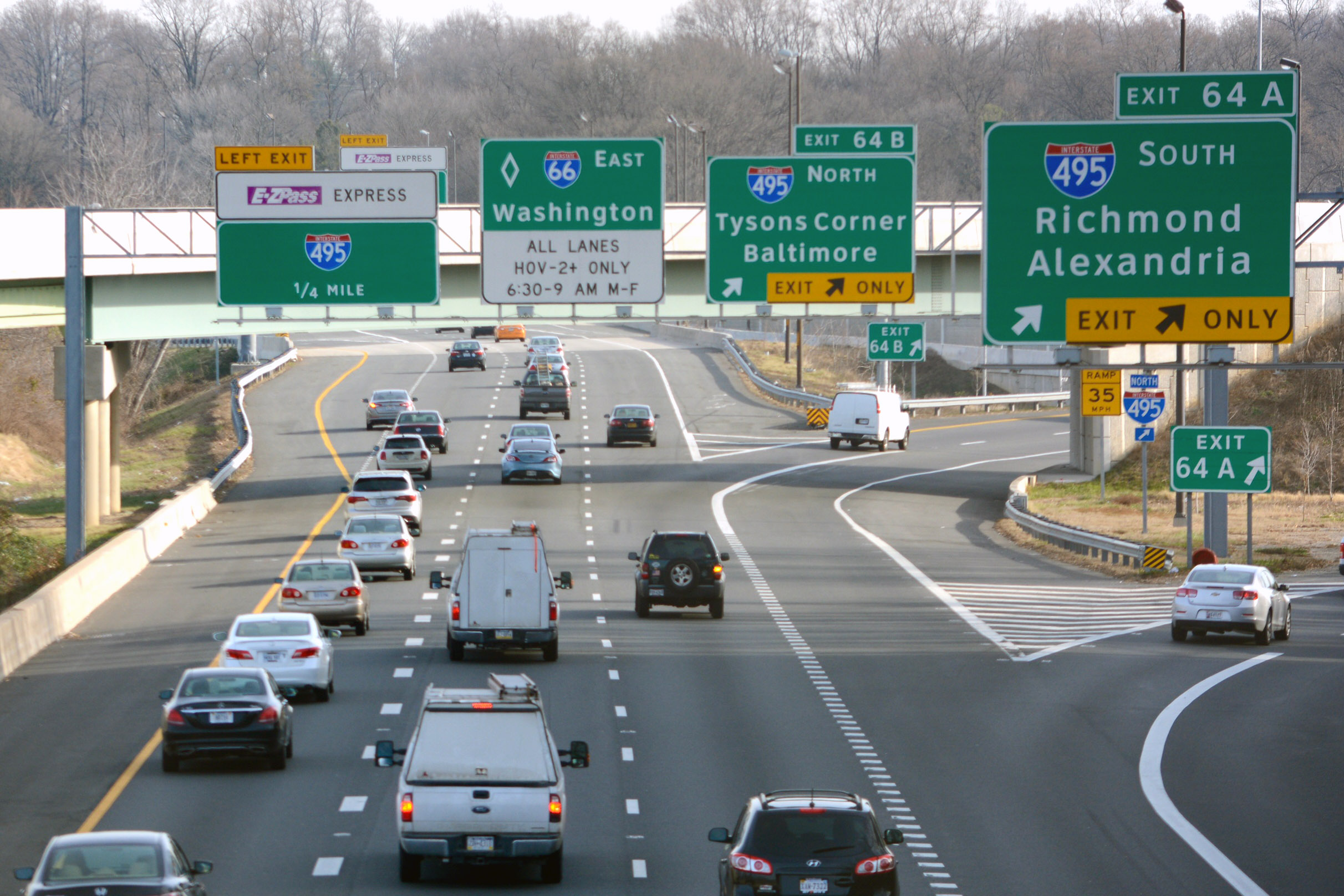WASHINGTON — With more telework, more construction and more people seeking alternatives, the number of drivers using some toll roads in the D.C. area is leveling off or declining.
On the Dulles Greenway, the number of average workday trips dropped about 6 percent in the first half of this year, compared to the same period a year earlier, to about 58,600. On weekends and holidays, there are now an average of 31,300 trips. Toll revenue dropped about 3.6 percent, even after toll increases earlier in the year.
Owner Atlas Arteria blames upgrades to Route 7, Route 28 and other alternative routes, and Silver Line construction, for much of the decline, which is expected to continue.
The Greenway is in discussions with the Virginia Department of Transportation and the Metropolitan Washington Airports Authority about changes at the eastern end’s connection to the Dulles Toll Road in an effort to reduce congestion at the western end as well.
On the Dulles Toll Road, owned by the airports authority, the number of trips taken through August this year are down 1 percent from the same point in 2017. Toll revenue of $101.1 million is down 0.4 percent.
So far this year, 89.5 percent of that revenue has been collected via E-ZPass, $2.9 million has been collected in violations, and $10.3 million has been collected in cash tolls. Cash payments are down 15 percent this year on the toll road, while tolls paid by drivers with E-ZPass who may not think as hard about the cost of each trip have ticked up 1 percent.
Toll road rates are expected to rise Jan. 1, which is expected to further cut into usage of the road.
On the 495 Express Lanes in Virginia, fewer drivers paid to use the lanes this spring than last.
Tolls paid on the Capital Beltway dropped 13.2 percent from around $23 million to $20 million in April, May and June, compared to the same period a year earlier.
Average daily trips declined 5.3 percent in the 495 Express Lanes to 48,000 in the spring. On a year-to-year basis for the period ending June 30, average daily trips fell 1.2 percent, according to Transurban’s financial reports.
The average 495 Express Lanes toll charged in April, May and June dropped from $5.77 to $5.40, leading to average workday toll revenue dropping to $294,000 from $341,000 last year.
On the 95 Express Lanes, which are also operated by Transurban, the number of average daily trips has remained flatter. Comparing April, May and June of this year to the previous year, the number of trips dropped 0.4 percent. For the full year that ended June 30, average daily trips increased 1.2 percent.
The average toll charged in April, May and June on the 95 Express Lanes was $8.45, about the same as the previous year; but, average workday toll revenue increased to $365,000 from $353,000 last year.
Combined, average daily trips in the 95 and 495 Express Lanes increased 0.5 percent in April, May and June, compared to the same period a year earlier.
A Transurban survey of 1,732 drivers in the region found about half of them have used the lanes at least once. Frequent toll payers were most likely to be under age 45, have children at home and pay for other convenience services such as grocery delivery. Some even said their companies are paying their toll bills.
“On paper, our frequent and our occasional customers are very much the same,” said Elisa Bell, Transurban North America director of marketing, in an interview. She hopes to get people more comfortable with the idea that their neighbors are the ones paying to use the lanes.
“On 495 Express Lanes, 83 percent of customers spent less than $20 last quarter; and, on 95, 73 percent of customers spent less than $20 in a month,” Bell said.
Around 5 percent of toll payers use the lanes daily though, she said, accounting for a high proportion of trips. The 95 and 495 Express Lanes are free to drivers with at least two other people in the car and an E-ZPass Flex switched to HOV mode.
Transurban’s financial report cited transportation network changes across the D.C. region as a potential driver of its meager growth rate last year.
“It all works together, if you think about it. It’s a network,” Bell said. “It’s one big network and one big market, and our lanes connect.”
The company is working to convert the Interstate 395 HOV lanes to an extension of the 95 Express Lanes and extend the 95 Express Lanes south to Fredericksburg over the next few years. The costs of the lanes and the financing of construction are expected to remain significant for the company for decades. Their bonds and loans are secured by the lanes themselves, which are due to remain under Transurban’s control through 2087.
On I-66 inside the Beltway, where tolls only apply during rush hour, there are not yet any year-to-year comparisons, but usage has remained relatively consistent.
The expanded hours implemented alongside tolls are having the largest impact on traffic. VDOT has yet to be able to say whether or not the tolls and expanded hours are actually moving more people through the corridor though.
Data on tolls paid on Maryland roads is older than that available for the Virginia facilities, but the state projects slower traffic growth on the Intercounty Connector and other roads in coming years than has been seen recently.
The Maryland Transportation Authority projected a decrease in toll revenue in the budget year that ended this summer, after an increase in the previous year.
In that previous year, usage of the ICC had increased significantly as the road was completed and people got more comfortable with it, but that growth rate is not expected to continue.
The Nice Bridge had seen a 1.1 percent increase in traffic, the Bay Bridge saw more than a 2 percent increase over the previous year, and only the Baltimore Harbor Tunnel saw a decline in usage.
A financial forecast this July projected steadily increasing toll collections over the next six years.
The forecast projects annual increases in traffic on Maryland’s tolled facilities to shrink to 0.35 percent by 2021.
That forecast does not include plans for new toll lanes around the Beltway and up part of I-270.








